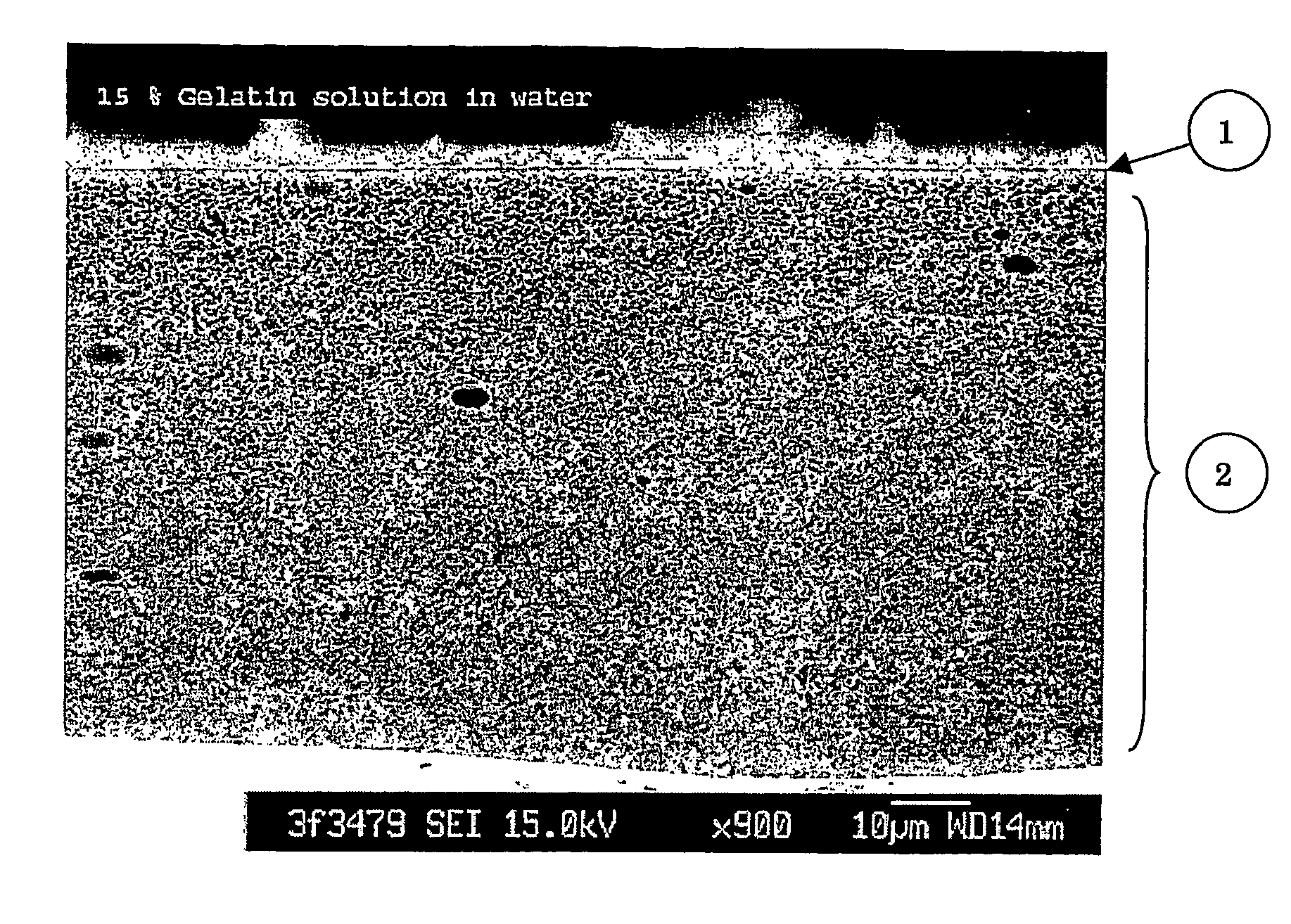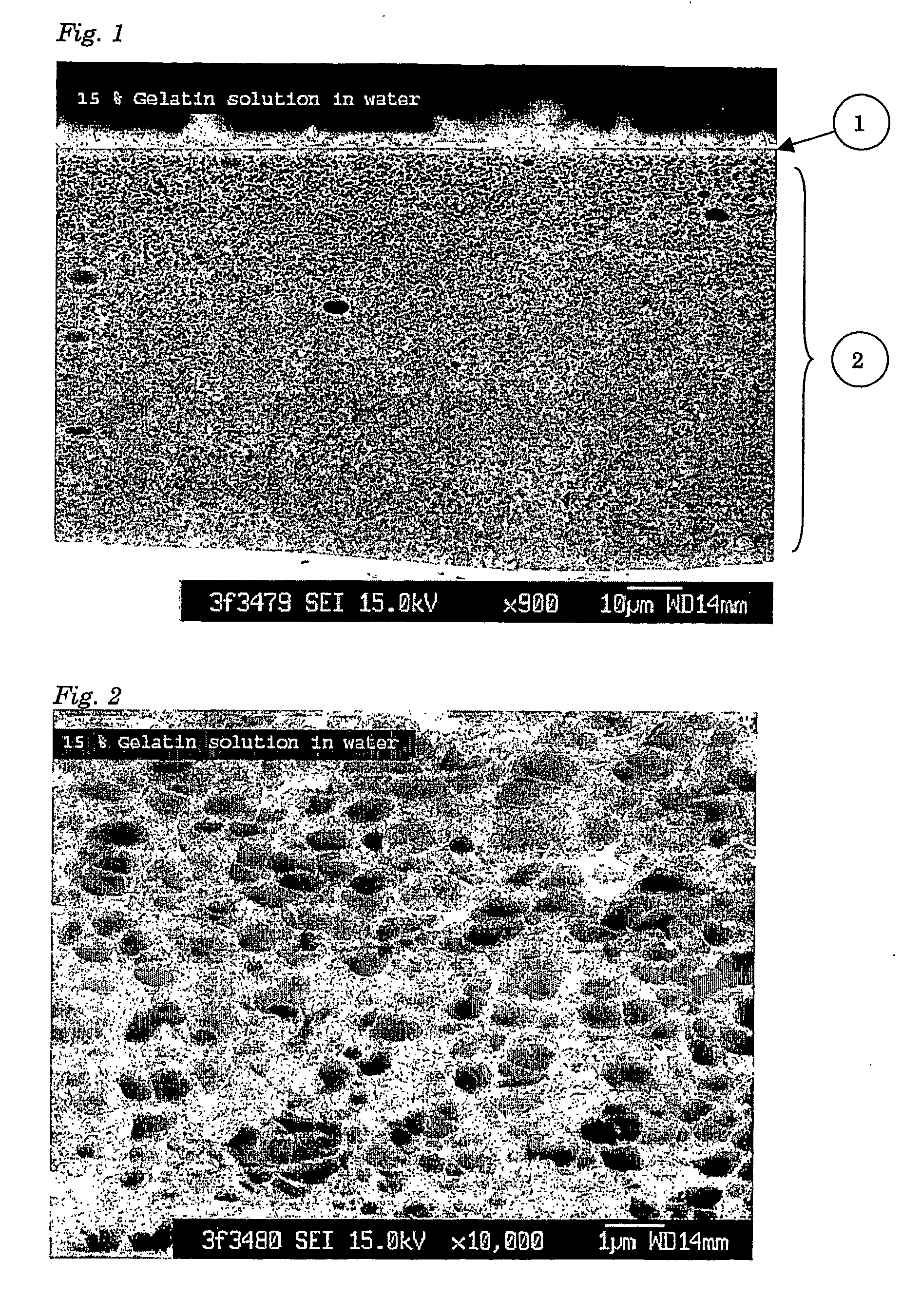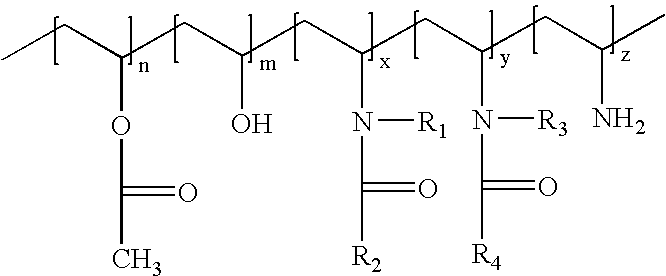Ink-jet recording medium
a technology of recording medium and inkjet, which is applied in the field of recording medium, can solve the problems of low optical density of printed images, poor dye stability, and general dye fading, and achieve the effect of reducing the amount of ink in the ink cartridg
- Summary
- Abstract
- Description
- Claims
- Application Information
AI Technical Summary
Benefits of technology
Problems solved by technology
Method used
Image
Examples
##ventive example 1
Inventive Example 1
[0134] A homogeneous dope solution was prepared by adding 20 g of lime-processed gelatin, having an average MW of 193 kD, into 80 g dimethylsulfoxide (from Merck, Germany) under agitation at 45° C. for 2.5 hours.
Method for Making a Porous Ink Jet Medium
[0135] A photographic grade paper (205 g / m2) laminated with polyethylene at both sides was used as a support. The surface was corona treated to enhance the wettability prior to coating the solution by means of a knife coater with an opening of 100 μm. The coated support was immediately immersed into a 20° C. ethanol bath (absolute grade from Merck, Germany) and kept for 30 minutes, upon which a porous layer was formed on the support. The porous layer was then dried for ca. 14 hours (overnight) under vacuum.
[0136] The resulting porous ink jet medium was subjected to the drying test and the result is summarized in Table 1.
##ventive example 2
Inventive Example 2
[0137] A gelatin dope solution was prepared by mixing 20 g of lime processed gelatin (MW average=193 kD) with 50 g of water at room temperature, and leaving it for 90 minutes to allow the gelatin to swell, then rising the temperature up to 60° C. to make it completely soluble under stirring. After the gelatin solution was completely dissolved, the temperature was reduced to 40° C. and 30 g of ethanol was added into the solution under rigorous agitation and kept for 30 minutes to allow the dope solution to form a homogenous mixture. Herein was added 3 g of a cross-linking solution containing 7.5 wt % of 2-hydroxy-4,6-dichloro-1,3,5-triazine. A porous ink jet medium was then prepared by using this solution according to the method mentioned in example 1. In stead of a knife coater, a KH coater bar 200 (wet thickness of 200 micro meter) was used for coating the solution onto the photographic grade paper. After drying, the membrane was further conditioned at 20° C. and...
##ventive example 3
Inventive Example 3
[0139] A homogeneous dope solution was prepared by adding 15 g of deionised lime-processed gelatin having average MW of 193 kD into 84 g water under agitation at room temperature, and leaving it for 90 minutes to allow gelatin to swell. Thereafter, the dope solution was dissolved at a temperature of 60° C. When the gelatin was completely dissolved, the temperature was reduced to 40° C. One gram of ethanol (absolute grade from Merck, German) was added into the solution under rigorous agitation and kept for 30 minutes to allow the solution to form a homogenous mixture. A porous ink jet medium was then prepared by coating said solution onto a laminated photo-grade-paper and immersing it into an ethanol bath according to the procedure mentioned in example 1. In stead of a knife coater, a KH coater bar 200 was used. The temperature of the immersion bath was set to 25° C. The film was dried for 30 minutes under vacuum.
[0140] The resulting porous ink jet medium was subj...
PUM
| Property | Measurement | Unit |
|---|---|---|
| diameter | aaaaa | aaaaa |
| diameter | aaaaa | aaaaa |
| pore size | aaaaa | aaaaa |
Abstract
Description
Claims
Application Information
 Login to View More
Login to View More - R&D
- Intellectual Property
- Life Sciences
- Materials
- Tech Scout
- Unparalleled Data Quality
- Higher Quality Content
- 60% Fewer Hallucinations
Browse by: Latest US Patents, China's latest patents, Technical Efficacy Thesaurus, Application Domain, Technology Topic, Popular Technical Reports.
© 2025 PatSnap. All rights reserved.Legal|Privacy policy|Modern Slavery Act Transparency Statement|Sitemap|About US| Contact US: help@patsnap.com



